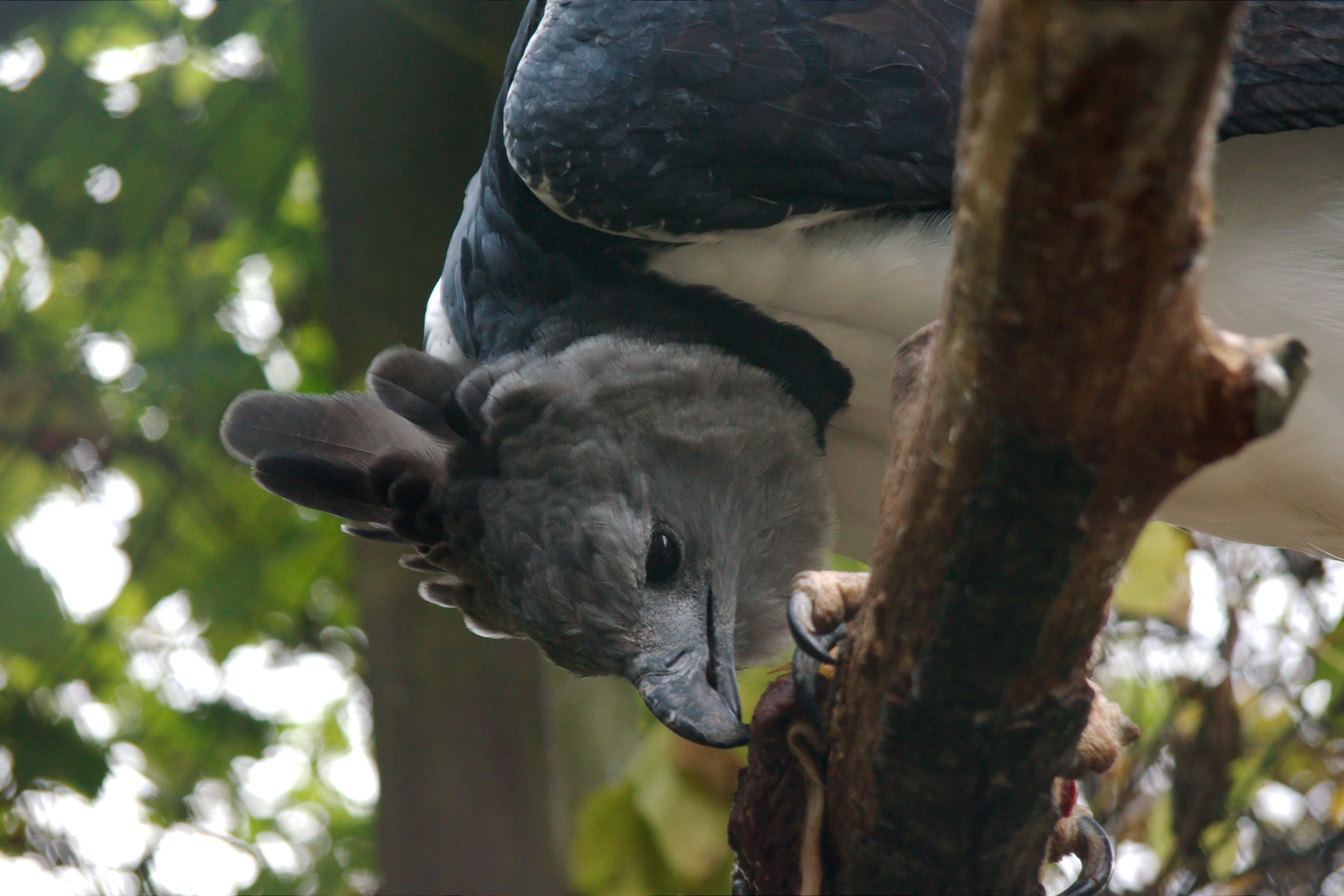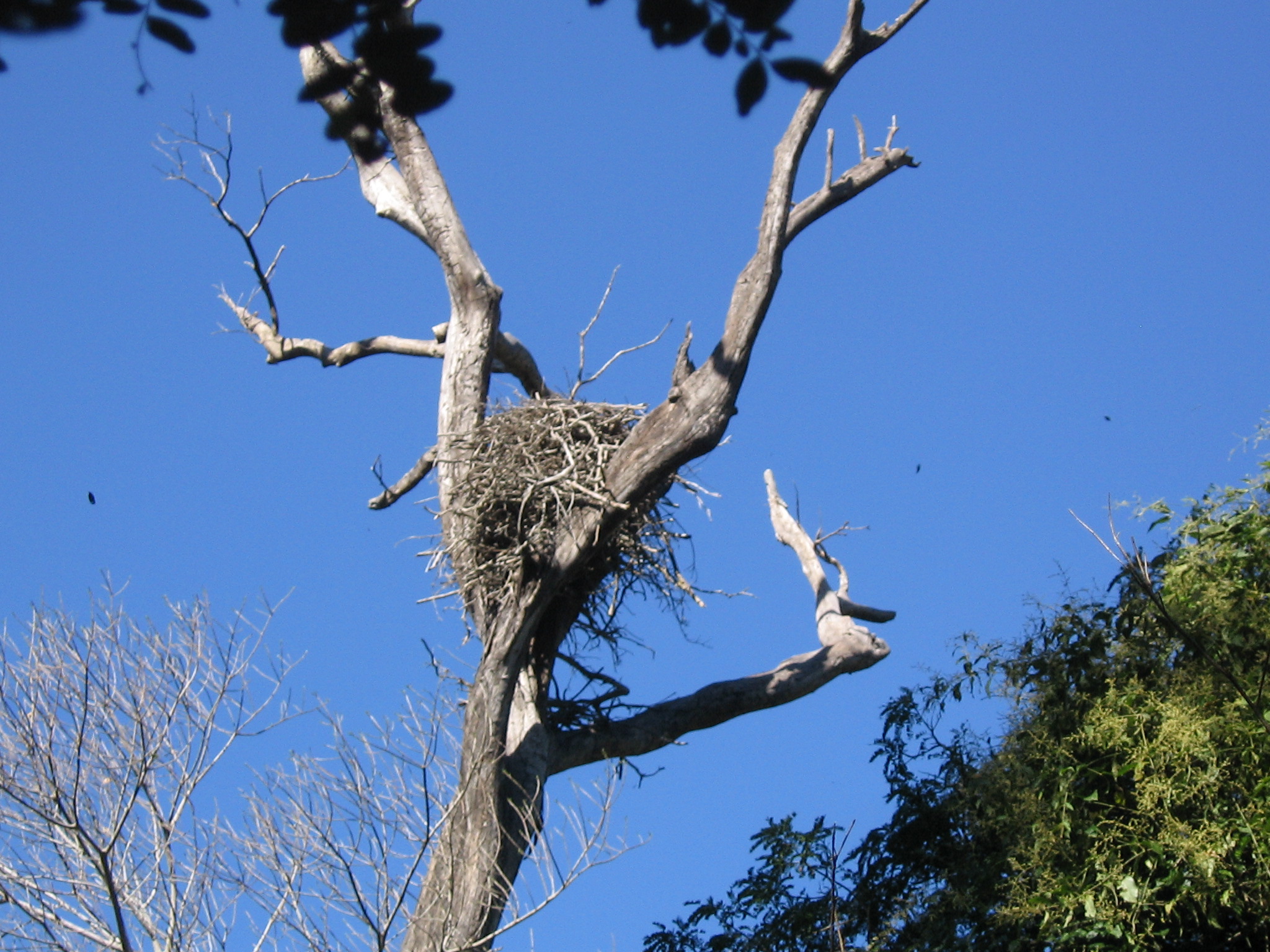Reproduction
The harpy eagle is an amazing specimen with its adaptive
wings, intense talons, and the ability to keep the nest they
live in disease free with their branch collecting, but not many
people would peg this creature as a loving parent. Due to the
love of a year round warm, tropical, and wet climate, the Harpy
Eagle loves embraces the warmth of the
 geography it lives in
order to be an incredible
geography it lives in
order to be an incredible
reproducer and parent. During the
course of a
lifetime, a female and male harpy eagle will
mate together, with there being no evidence to
suggest a stray from
this mating behavior. These
birds will use certain pitches of
notes, that
sound like yelps or quacking, to communicate to
each other. This is paired with the slight flapping
of wings, and
also movement to different lengths
away (Gochfeld et al. 1978).
After conception,
the Harpy Eagle usually only deposits one egg.
This type of reproduction happens almost every time, but in
certain occasions a second egg will be deposited. These eggs
have been shown to have the phenomenon of synchronous hatching.
Although both eagles hatch at the same time, the mother chooses
one to take care of, while the other is forgotten, this usually
means all but certain death for the little guy. The idea of
forgetting a child might take some points away from the parent
of the year award for the harpy eagle (Piper 2007).
To add to the idea that this eagle is an amazing parent, it
also has one of the smartest strategies to keep disease out of the
nest while the infant harpy eagle is there. The eagle uses a form of
green branch collecting from the C. pentandr a tree, and also the
occasional branch from the fig tree. This eagle is a true coinsure
of fine branches. These branches are said to do two amazing actions
for the harpy eagle’s nest. The first is that the branches actually
repel insects away that could
harm the eagles and their young by
using the simple leave chemistry. This is an amazing example of how
even animals can use biochemistry in everyday life.
a tree, and also the
occasional branch from the fig tree. This eagle is a true coinsure
of fine branches. These branches are said to do two amazing actions
for the harpy eagle’s nest. The first is that the branches actually
repel insects away that could
harm the eagles and their young by
using the simple leave chemistry. This is an amazing example of how
even animals can use biochemistry in everyday life.
The second factor that the green branches help with is the actual sanitation of
the nest. The harpy eagle actually lays these branches over the dead
carcasses of the animals they have slain that lay in their nest to
keep down infection, and promote a nice clean environment for their
young (Seymour et al. 2010).
To conclude, even though the harpy eagle might be awful for completely having a favorite child to the point where the other one dies, they still are amazing parents to young that they focus on. I would just dare animal, or even a human to try and mess with a baby harpy eagle, and not come away with at least some huge gashes from the amazing talons that this fantastic parent possess.